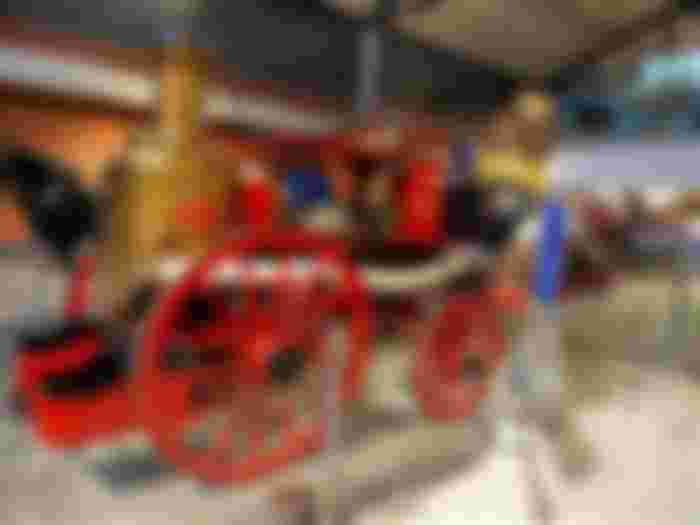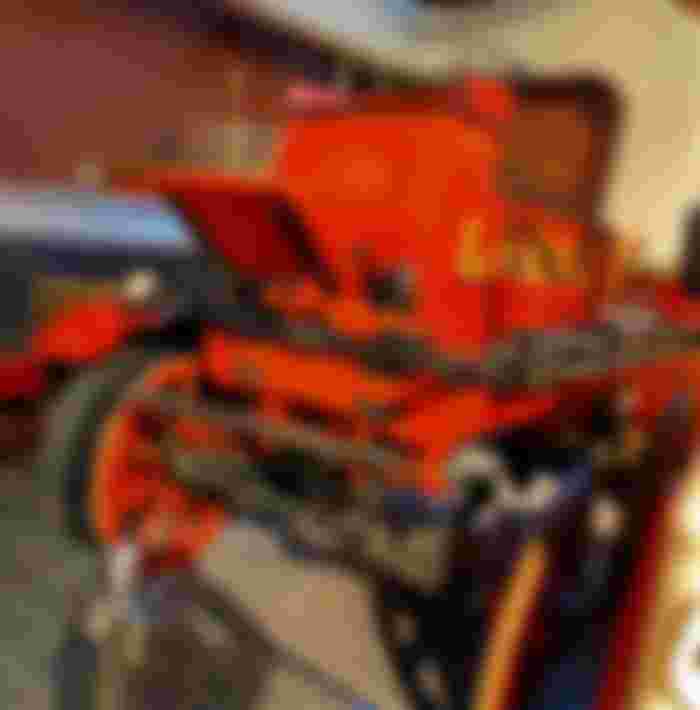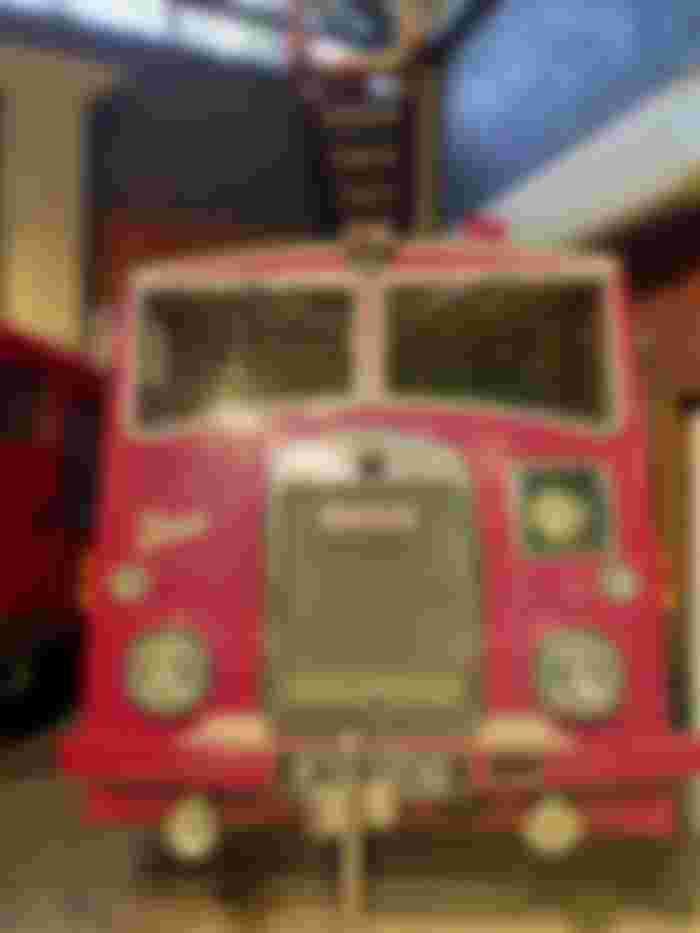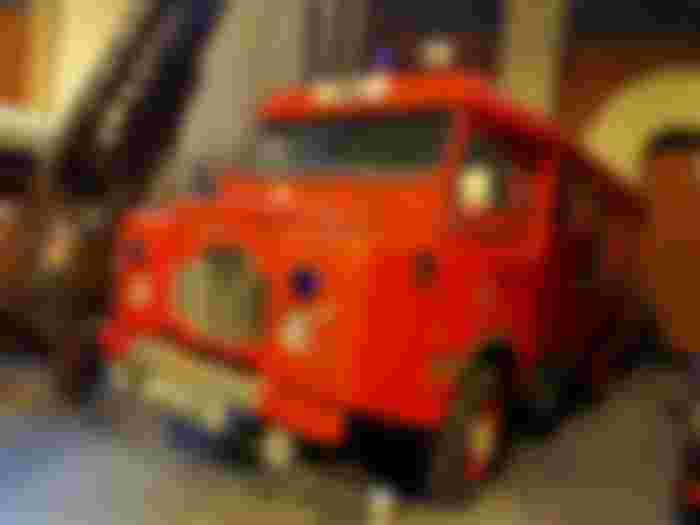A Fire Brigade was established in Belfast by the mid-eighteenth century, making it among the oldest and perhaps the earliest in the British Isles. Leather buckets and ladders for used for fire-fighting in Belfast as early as 1686. In the mid 17th century, George McCartney provided a piped water supply for his corn mills, and this was later to form the basis of a water supply for the town of Belfast. A pond was created in Fountain Street in 1733 as a source of water for extinguishing fires and in 1788 the town council had holes made in the arches covering the Farset River, which ran under High Street. Water could be drawn up through the holes by a squad of men who were paid 30 shillings a year and 5 shillings for each fire they fought.

In 1808, the management of the town fire service was given over the Belfast Insurance Company, on condition that a new fire engine be acquired. Although there is no evidence that this actually occurred, the Company remained responsible for the brigade until 1813, when this function was again resumed by the Police Committee. In 1816, the Belfast Newsletter reported that a fire in Church Street had not been controlled efficiently.
The town fire engine was, after some time brought to the spot but without any buckets and in such a shameful want of repair as to be totally inoperative, for after having been worked for two or three minutes one of the pipes burst and consequently the engine become useless.
In other areas, local parishes and councils had control of fire services. In 1833 the Royal Exchange Assurance company of London advertised that in Dublin it could offer.
Firemen powerful engines and other instruments in constant readiness in case of accident and maintained at a large expense for the security of the public. The men are distinguished by a uniform of light green with gold badge bearing the figure of the Royal Exchange the emblem of the company.
Belfast acquired its first 'Steamer' or steam-powered fire engine in 1877. Horse-drawn Steamers we're widely used until 1911. When the motor-driven pump was introduced, leading to a doubling of the speed at which engines reached fires. 'Steamers' continued in use until 1913, when the Brigade was the first in the British Isles to become completely motorised
Steam-Powered Fire Pump

Steam-powered fire pumps first appeared in the 1820s and as the century progressed they increase in power and efficiency. The pump could be pulled by one horse on level ground or by 2 horses if there were hills. The steam engine provided power only for pumping water.
This pump was purchased second hand by The York Street Flax Spinning Company Belfast and used at their Muckamore premises near Antrim. The production of linen thread generated huge quantities of dust so the risk of fire was very high.
This pump was previously the property of the Earl of Dartmouth and was used on his English estate near Wolverhampton. Many owners of large estates acquired fire pumps during the 19th century using estate workers to man them.
'Whippet' Motorised Fire Pump

This pump was purchased in 1932 by the Belfast Fire Brigade and saw active aervice throughout the city for over 30 years. In 1941, during the Second World War when Belfast was bombed from the area, this pump was fighting fires in York Street near the city's docks. It is said that a bomb landed close by and the pump was blown several yards back along the street. During the 1950s this pump was kept as a reserve appliance. It was common to give fire pumps names which suggested speed.
Hand-Operated Fire Pump

This hand operated fire pump was bought in the 1880s for use in Larne Co Antrim. As town grew in size during the second half of the 19th century the need to have the means to fight fires become more and more important. Many local fire brigadees were formed in the 19th century.
This pump which was still in use in the late 1920s was drawn by two horses. It was operated by volunteers under trained supervision. Some of the volunteers stood at either side of the appliance and worked the long wooden handles up and down the pump water to the hoses at the far, while others kept the pump supplied with water. The pump could throw about 455 litres (100 gallons) of water per minute to a height of 36.6 meters (120 feet).
The volunteers were paid with tokens that could be redeemed for money at the Fire Station or for goods in local shops.
Motor Fire Pump

The Dennis F8 fire engine was named the 'Ulster' because it was originally commissioned by the Northern Ireland Fire Authority which ordered 30 units between 1952 and 1954.
The body was specially designed to be only 198cm (78 in) wide so the appliance could get access into the narrow entrances and operate in confined spaces. It's Rolls Royce engine could pump 4500 litres (1000 gallons) of water per minute. The Ulster also carried a full range of rescue equipment and an auxiliary pump covered by a Coventry Climax engine to boost water supplies to its integral tank. The introduction of the F8 led to some standardization of fire engines in rural areas where their narrow bodies were especially useful in giving access to narrow farm lanes.
These appliances remained in service with the Northern Ireland Fire authority until the 1980s.
Fireman's Ladder

When ladders were used to aid fire-fighting they had to be pushed or carried through the streets by the firemen themselves. As fire engines developed they were designed to carry large ladders. When a ladder of this type was used it had to be taken off the fire engine, wheeled into place and held steady by the firemen. Two firemen climbed the ladder, one to effect the rescue and the other to guide his feet as he climbed down. The fireman wears the uniform of the Belfast Fire Brigade of the 1930s. This is the ladder from the 'Whippet' Fire Pump.
Land Rover Fire

During the 1950s Land Rover were adapted for use as fire appliancees. The Land Rovers 4-wheel drive was particularly suitable for use in rural areas over difficult terrain and on industrial sites. This example was built for the Northern Ireland Fire Authority in 1976. When it was withdrawn from service and donated to the museum 19 years later, it had covered a distance of 14 586 km (9065 miles). It is equipped to carry 455l (100 gallons) of water and 229m (750ft) of hose.
1967 Karrier Ambulance

This 1967 Karrier was the first ambulance in the world to be be fitted with a portable defibrillator. Professor Frank Pantridge produced the first portable defibrillator whilst working as a consultant physician and cardiologist in the Royal Victoria Hospital Belfast in 1965.
It was later adapted and installed in this refurbish Karrier Ambulance and first used on the streets of Belfast in 1 January 1966.
A plaque inside reads that the ambulance was presented to the Royal Victoria Hospital by the Irish Co-Operative Women's Guild in December 1967. Partridge's invention proves to save thousands of lives around the world and the defibrillator continues to be the most effective treatment for cardiac arrest.








In past,how they used to help each other with simple cars.You can really see a lot of interesting things in history museums.Thank you for your great photos dear.I can simply imagine if I see photo. Firefighter also in my country are very respect people.They helping people and animals without paying.